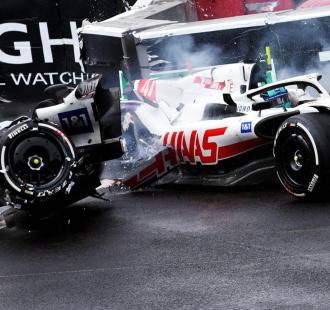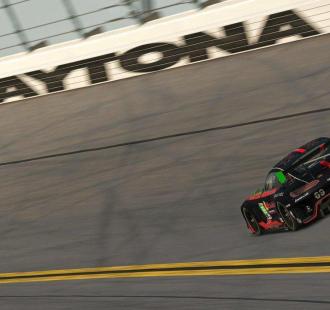
What happens at an F1 crash test?
Before the start of every new Formula 1 season, a car must be crashtested by the FIA before it is certified to race. Safety is themost important thing for the governing body, which is why they nolonger leave it to the teams themselves to crash test their owncars. The tests cover every aspect of what could happen in anaccident, which is why we often see drivers climb out of carswithout any serious injuries. If you were to look at MickSchumacher's crash during the 2022 Saudi Arabian Grand Prixqualifying, even though he was airlifted to hospital, he was abletake part in the following race at Australia. If that happened 30years ago, it is likely that he would have not walked away. So howdoes each team make sure that their 'survival cells' are up to thetask of protecting their drivers? Meeting the grade The section ofthe Technical Regulations that covers crash tests is Article 13,running from page 103 to 117. From there it covers several areas oftesting: a survival cell frontal impact test, roll structuretesting, survival cell load tests, side impact structure, frontimpact structure, rear impact structure, steering column impacttest, and a headrest load test. All the tests must be carried out"in accordance with FIA Test Procedure 01/00, in the presence of anFIA technical delegate and by using measuring equipment which hasbeen calibrated to the satisfaction of the FIA technical delegate,"according to the regulations. If the design is altered at any pointduring the season, they must go through another crash test. Theregulations go into detail over how each part must be passed toachieve what is known as 'homologation' by the FIA. While we willnot cover the full extent of the regulations - as that would berather boring - we will delve into some of the important parts.Survival cell frontal impact There are two frontal impact tests fora car to pass; the first with everything intact and as we would seeon the car. The other test is done with damage already inflictedfrom the first test, to cover the chance of a secondary impact. Thecar must be able to withstand the secondary impact to pass thetest. Roll structure test Since Zhou Guanyu's dramatic crash at thestart of the 2022 British GP, the roll structure tests have beenamended to produce stronger roll-hoops. The rollover bar is thehighest point on the car and is the area of that teams will put ahuge effort into ensuring it complies, without adding too muchweight to the car as it affects the centre of gravity. According tothe regulations: " The principal roll structure must be subjectedto one of the following static tests at 75% of the load (105kN),followed by one of the tests at full load (140kN). Both tests mustbe carried out on the same structure. The tests will be chosen atrandom and communicated to the Competitor 3 weeks before theirscheduled homologation date." Survival cell strength tests Thesetest prove the overall strength of the chassis. It tests thestructure of the fastenings on the nose laterally and vertically,and in various areas along the sides and the bottom of the chassis,cockpit sides, and the fuel tank enclosure sides and bottom. Sideimpact structure If you peel away the side pods on a Formula 1 car,you will see two tubes that stick out each side of the driver. Oneis near the floor and the other is higher up, and the are in adefined position relative to the cockpit opening. They are designedto decelerate the impact when a car goes into a barrier side on.Front and rear impact structure The frontal impact structure is thenose section of the car designed to collapse on impact. Thisdecelerates the mass of the car and reduces the impact g-force onthe driver. The rear impact structure acts exactly the same as thefrontal, except it fastens to the gearbox in line with, or behindthe rear axle line. This is often why drivers might need to changetheir gearbox if they crash in this area. Steering column andheadrest load test If a driver hits their head at the end of theirsteering column in a crash, this section is designed to collapsebefore penetrating the driver helmet. The headrest load testensures the headrest will absorb the load of a drivers head in animpact. The aim is to prevent the g-level getting too high andpotentially causing brain damage.


